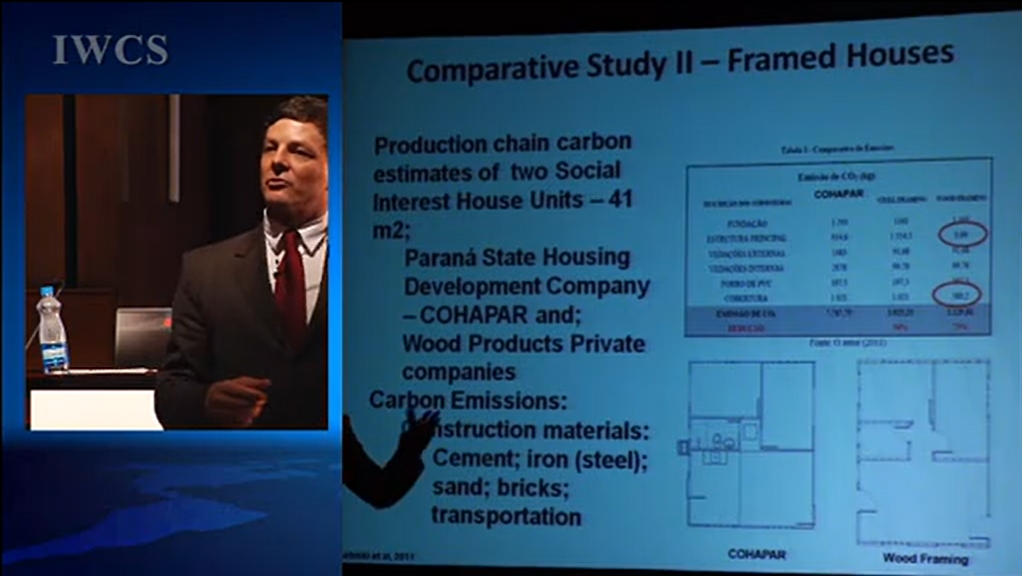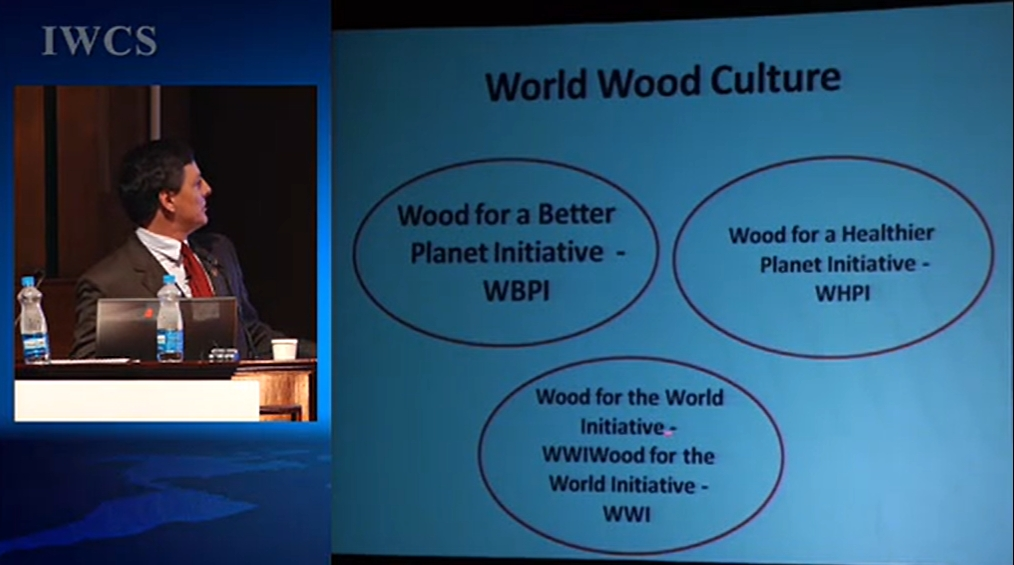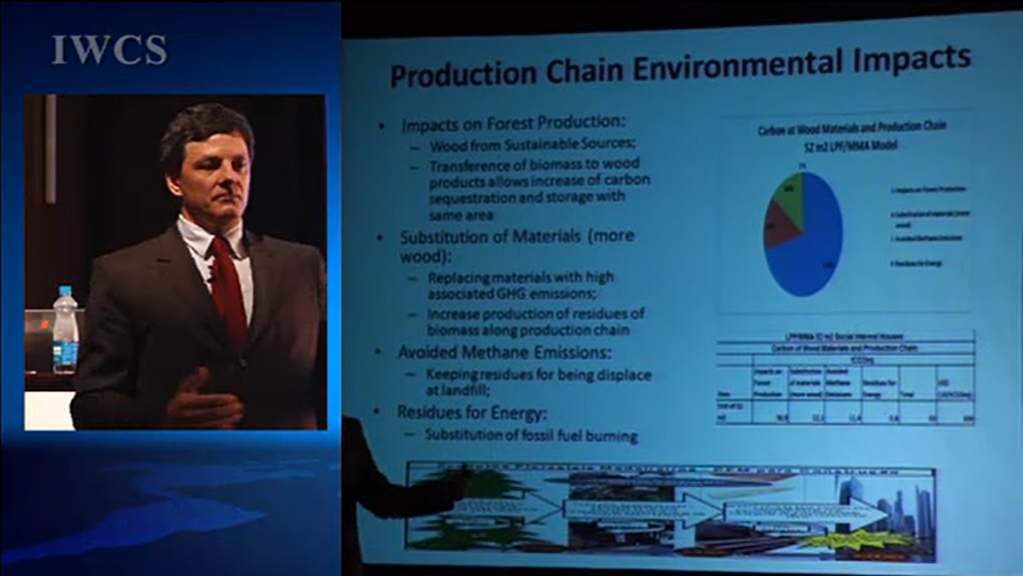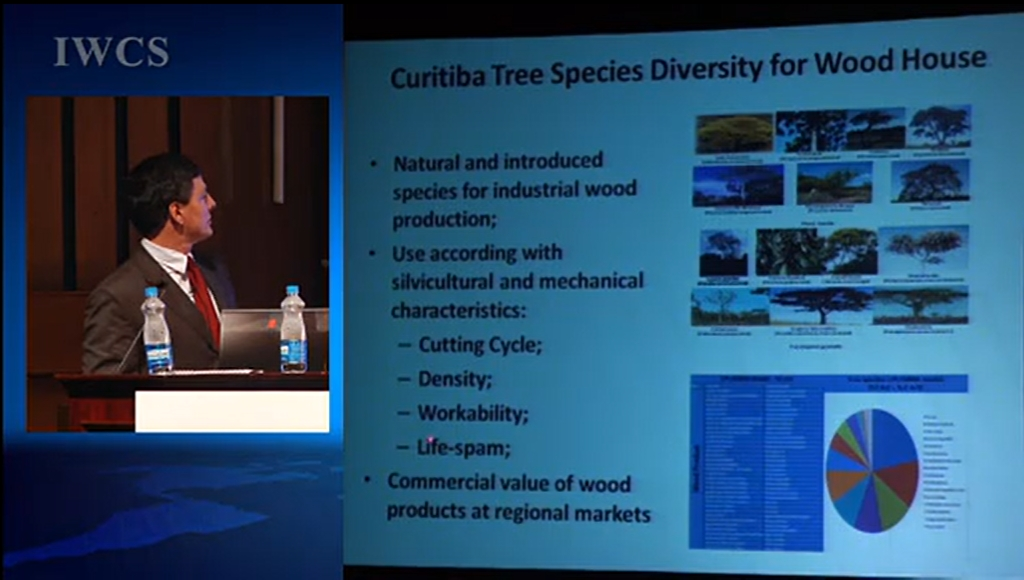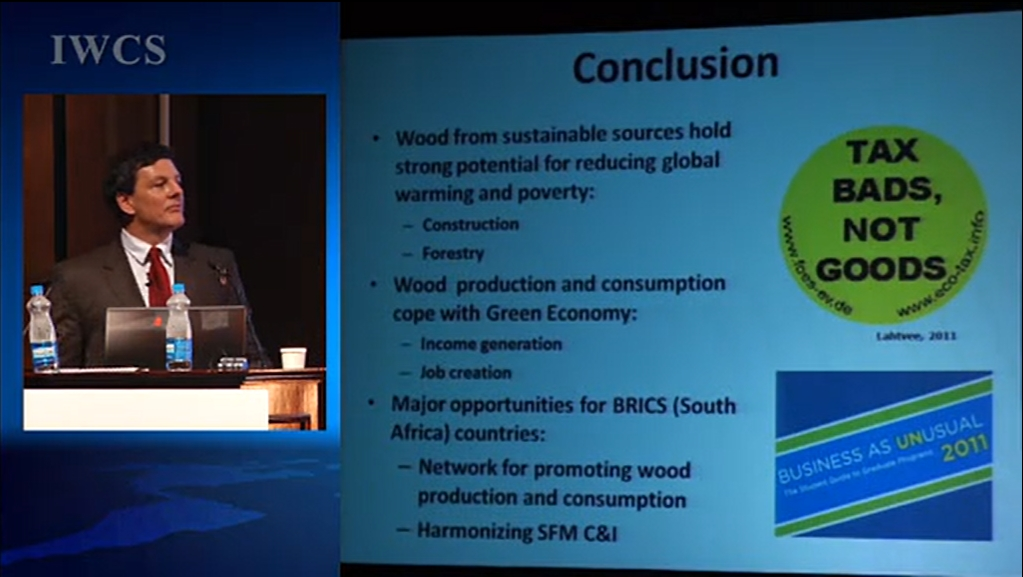活动名称:木艺木趣国际研讨会暨展览会
时间地点:2011年10月20日,印度班加罗尔J N Tata多功能礼堂
演讲嘉宾:Ederson Augusto Zanetti, Brazil
演讲题目:Wood from sustainable sources and the mitigation of global climate change – case study of social interest housing in Curitiba, Parana, Southern Brazil
摘要:Global climate change is a natural phenomenon being accelerated by human actions that generate Greenhouse Gases - with GHG levels increasing, especially CO2. Amongst sectors which can contribute to reducing emissions by 2030, the construction and forest sectors have significant advantages: the first holds the largest contribution potential while the second the fastest response to an increase on Certified Emissions Reductions - CERs prices, together they can play a major role on reducing the global climate change acceleration. In Parana state, the sector produces almost 35 million m3 / year (57% energy, 43% industrial), corresponding to 8% of GDP, creating up to 750,000 direct and indirect jobs. The government initiated the Program for Timber Productive Sector of Parana State - PFM100, which is responsible of planning the next 100 years of developments within the sector. The main goal of the program is to overcome possible barriers to and support implementing strategic policies to increase the production and use of industrial wood within the state. Located at the South of Brazil, the state holds a current deficit of 314,200 popular homes, and Curitiba, the State‘s capital, holds a deficit of 50,000 homes. In order to estimate the contribution of increasing wood usage within popular homes, a comparative study was conducted, involving a 52 m2 model traditionally built by the Parana State Housing Company - COHAPAR and an alternative model from the Wood Products Laboratory of the Brazilian Forest Service - LPF/SFB. The LPF/SFB wood house model uses 62 construction items, being 56% of which wood materials, against 67 items applied at COHAPAR model with 29% steel materials. The LPF/SFB model resulted in an emissions reduction of 12,1 tCO2eq / unit just by replacing high emission‘s associated raw materials, it elevates demand of forest biomass in circa of 60 % and generate another 8 tCO2eq / unit for energy production with the use of solid residues. Besides those effects, the use of residues avoids methane emissions at landfills. In terms of CERs, the cumulative effect of increasing Sustainable Forest Management production or reforestation, replacing raw materials, producing energy from residues and avoiding methane emissions from landfills, result in estimated 83 tCO2eq / unit, or US$ 830 in terms of carbon credits. A list of regional occurring species was elaborated, confronting raw materials for LPF/SFB wood framed house model, resulting on 25 species for being used at State level and 16 species recommended for use at Curitiba area.
Ederson Augusto Zanetti, Federal University of Technology of Parana, Av. Pref. Lothário Meissner, 900. 80210-170, Curitiba, Paraná, BRAZIL.


 10,284
10,284

